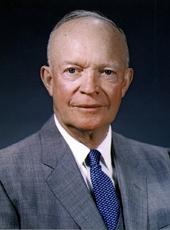
Statement by the President Upon Signing Bill Amending the Railroad Retirement Act of 1937.
I HAVE TODAY approved H.R. 356, "To amend the Railroad Retirement Act of 1937, as amended." This bill repeals, effective October 30, 1951, the so-called dual benefits restriction which was incorporated in section 3 (b) of the Railroad Retirement Act by Public Law 234, 82nd Congress. That restriction required that a railroad retirement pension or annuity based in whole or in part on untaxed railroad service before 1937 must be reduced if the annuitant was receiving or was entitled to receive old-age benefits under the Social Security Act.
H.R. 356 will increase benefits for about 36,000 annuitants presently on the rolls by an average of $24 a month, or 20 percent of the average annuity, retroactively to October 30, 1951. Over the next 50 years it is estimated that about 120,000 railroad workers will benefit.
The dual benefits restriction was one of several provisions enacted in the Railroad Retirement Act Amendments of 1951. These amendments increased benefits generally and also provided for closer coordination between the financial and benefits features of the railroad retirement and OASI systems. The purpose of the restriction was to minimize duplicate benefits largely made possible by the 1950 OASI "new start" and to help provide funds to pay for the general increase in railroad benefits.
In approving H.R. 356 I recognize the sentiment of the Congress that the dual benefits restriction was not wholly satisfactory because certain weaknesses in it made it less than fair to the annuitants who were affected. These weaknesses were fully brought out in the extensive hearings before the House and Senate committees and are set forth in the reports on the bill. In some cases the restriction operated to reduce the combined railroad retirement and OASI benefits for an annuitant and his family below the amount of railroad benefits the individual would have received if his service had all been counted under the Railroad Retirement Act. The restriction also operated to keep many annuitants from receiving cost of living increases in OASI benefits enacted by Congress subsequent to October 30, 1951.
On the other hand, it is also apparent that repeal of the dual benefits rest fiction in itself creates several anomalies which should receive the attention of Congress at an early date. For example, the repeal of the restriction makes it possible for former railroad workers who had obtained railroad retirement benefits based on 30 years of partly or wholly untaxed service to qualify also for full Social Security benefits after as little as six quarters of employment covered by the Old Age and Survivor's Insurance provisions of the Social Security Act.
It is vital that retirement programs operated by the Government be so arranged that they conform to a reasonable overall pattern. It should not be overlooked that today, under all of these systems, many opportunities arise for uneven, and sometimes even windfall benefits, because these systems have not been adequately coordinated with the provisions of Old Age and Survivor's insurance.
The importance of this principle of coordination was recognized when the Congress established the Committee on Retirement Policy for Federal Personnel to make recommendations on the relationship of the several retirement systems for Federal employees with OASI. The railroad retirement system, like the Federal employee systems, is essentially a staff pension plan. Its better coordination with OASI, as has been done in the case of many private staff pension plans, would appear to be needed.
One other important matter that should receive the attention of the Congress is an equitable means of financing the benefits which repeal of the dual benefits restriction will provide. Over the next 50 years it will involve aggregate expenditures estimated at $385 million, and will increase the actuarial deficiency in the railroad retirement account from 0.91% of payroll to 1.06%. While this increase is not particularly great, it cannot prudently be disregarded if the railroad retirement system is to be kept actuarially sound.
Note: As enacted, H.R. 356 is Public Law 398, 83d Congress (68 Stat. 250).
Dwight D. Eisenhower, Statement by the President Upon Signing Bill Amending the Railroad Retirement Act of 1937. Online by Gerhard Peters and John T. Woolley, The American Presidency Project https://www.presidency.ucsb.edu/node/232182
